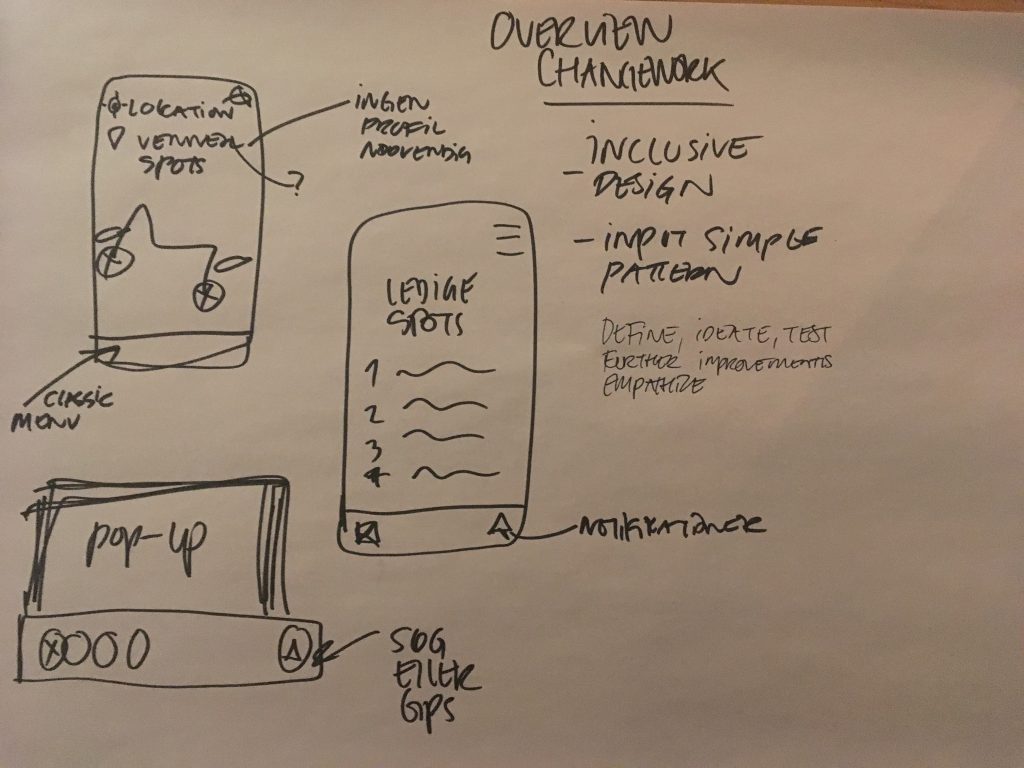Introduction
ChangeWork, a welfare technology app focusing on addicts in Copenhagen and was developed by the Danish Design Center (DDC) for and in collaboration with the City of Copenhagen’s Social Administration
Project scope
Through the Changework app, unhoused people can find shelter, mental health care, food banks, and other resources.
Target Users
We have not distinguished between the two areas (abuse and homeless). But the purpose has been to illustrate common challenges and opportunities across the homeless and substance abuse efforts.
This project focuses on homeless people who are far from living in their own homes. It can be: homeless people living on the streets or homeless people who use temporary offers such as hostels, night cafes etc.
Challenges
Cumbersome internet access, storage, overview of today’s offers.
Goals
There is a high demand for electricity to charge phones. Copenhagen lacks public electricity outlets despite the availability of free mobile devices and data. The Changework app locates outdoor electric outlets.
The smartphone
A cheap robust smaprtphone with municipally paid sim card with locked functions.
What challenges are we solving?
Locating outdoor electric outlets with a very simple interface.
Facts about homeless residents in Copenhagen
There are almost 1,600 citizens in the City of Copenhagen who are homeless. Of these, a few live on the streets. Most live with friends, acquaintances and in hostels. At the moment there are approx. 500 hostel places in Copenhagen Municipality.
Facts about citizens with abuse
There are 7,000-8,000 citizens with a substance abuse problem in Copenhagen. 2,800 are in treatment annually for their abuse. The tendency is that heroin use is declining sharply, that there are more new citizens in treatment for cannabis abuse, and that cocaine is seen to a lesser extent. In the City of Copenhagen there are approx. 19,000 alcohol-dependent citizens, of which approx. 2,000 are annually processed by the municipality. It is estimated that 1/3 of these are socially disadvantaged citizens.
Challenges
Difficult access to computer / wi-fi
Citizens often have difficult access to computer / wi-fi. Computers in libraries are overbooked and can only be booked online. When the citizen finally finds a computer, there are often other problems – the PCs have limited access to special websites (job center, bank, etc.), or an iPad is not compatible with NemID. If the citizen finds a free computer, there is often nervousness associated with handling personal data in an open space and on a public network – because, who is also watching?
How can we use technology to create greater access to computer / wi-fi access that the citizen dares to use?
Difficult storage of personal belongings
When you are homeless, it is often a challenge how you can handle your personal belongings – including important papers, ID cards, medicine and money. It is not uncommon for the citizen to have to store things in bushes and trees because they do not know where to make them. The citizen experiences that effects are removed, lost, forgotten, stolen and therefore lost – with great consequences as a result.
How can technology create new opportunities for safe storage of personal belongings?
Lack of an updated overview of today’s offers
For the citizen, it can be difficult to get an overview of opportunities and offers that they can take advantage of for e.g. a hot meal, hostel places, etc. Existing types of ‘city overview’ for the citizen are most often in paper form, which can be lost and lost. In addition, information is often outdated, of a general nature and does not inform about special day offers and new initiatives.
How can we use technology to create an accessible and up-to-date overview of today’s opportunities and offers?
“If you are homeless, a cell phone is the one tool you have to seek resources and services that will help you in your daily life.”
Wireframes



Early prototypes

Study
We invited 10 participants to participate in our study. These participants had either lived on the streets during a period or were in fact homeless in Copenhagen. The participants were given a scenario and a few tasks, and were told to verbalize their thoughts, questions, anything that comes up as they attempt to complete the tasks. Using “Thinking Aloud” is a great way to gather qualitative information. Furtermore, we also gathered quantitative data such as time spent on a task and number of faulty elements pressed.
Features
- The app works with just one tap
- No profile or accounts required
- Works on older smartphones
- In real time updates
UI Design
Mobile User Experience
Mobile behaviours activities
Session duration
Microsessions
